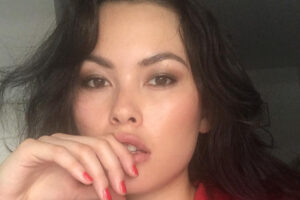
In the year 2000, Wong Kar-wai gifted cinephiles with what is arguably one of the greatest cinematic love stories of all time – ‘In the Mood for Love’. More than two decades later, the seminal romance set in 1960s Hong Kong still enchants with its slow-burn passion and exquisite aesthetic.
At first glance, the plot seems simple enough – two neighbors, Chow and Su, suspect their spouses are having an affair. As Chow and Su roleplay how their cheating partners met, they start developing feelings for each other. But despite their growing attraction, propriety and morals prevent them from acting further on their emotions.
This restraint imbues each sensual moment with aching desire. A touch of hands lighting cigarettes sends sparks flying. Shared meals become scenes of seduction. Stolen glances in the dark communicate entire silent movies of longing. The lush camerawork caresses stars Maggie Cheung and Tony Leung’s faces in luminous close-ups, elevating their subtle performances.
Every frame of the film, meticulously crafted by cinematographer Christopher Doyle in collaboration with Wong Kar-wai, is a visual delight. The rich palette, dominated by deep reds and lush greens, paints a vivid picture of 1960s Hong Kong.
Wong’s signature style amplifies these complex feelings tenfold. The camera behaves as a voyeur, tracking the pair in hypnotic slow motion and tight close-ups. The tight shots of narrow corridors and cramped apartments serve as a stark contrast to the expansive, unspoken emotions that simmer between the protagonists, played to perfection by Maggie Cheung and Tony Leung. Their restrained portrayals, marked by stolen glances and lingering silences, are a masterclass in subtle acting.

Maggie Cheung’s ever-evolving wardrobe, especially her stunning cheongsams, plays a pivotal role in the narrative. Each dress, with its unique pattern and color, mirrors the shifting dynamics and emotions of the lead characters, becoming a silent yet powerful storyteller.
The film’s haunting score, particularly the recurring “Yumeji’s Theme,” adds another layer of depth, encapsulating the mood of melancholy, longing, and restrained passion that defines the narrative. This sense of restraint is further amplified by the societal norms and expectations of the time, making the protagonists’ internal struggle not just personal but deeply rooted in the cultural milieu of 1960s Hong Kong.
The subtle acting and direction create an intimacy far beyond dialogue. In silence, a cigarette shared or a furtive touch in the dark speak sonnets. The details accumulate into a profound, melancholic whole, steeping us in Chow and Su’s world.
What truly sets “In The Mood For Love” apart is its exploration of timeless themes like love, loneliness, and longing. Wong Kar-wai’s innovative storytelling, marked by a non-linear narrative, slow-motion sequences, and dreamlike visuals, resonates with audiences across the globe, transcending cultural and linguistic barriers.
‘In the Mood for Love’ intoxicates through its aesthetic richness, while plumbing love’s depths – excitement, temptation, betrayal, heartbreak. Wong crafted a singular work whose elegiac beauty only strengthens over time. When you want to lose yourself in one of cinema’s most stunning romantic reveries, this tragedy of restrained passion awaits.










Leave a Reply